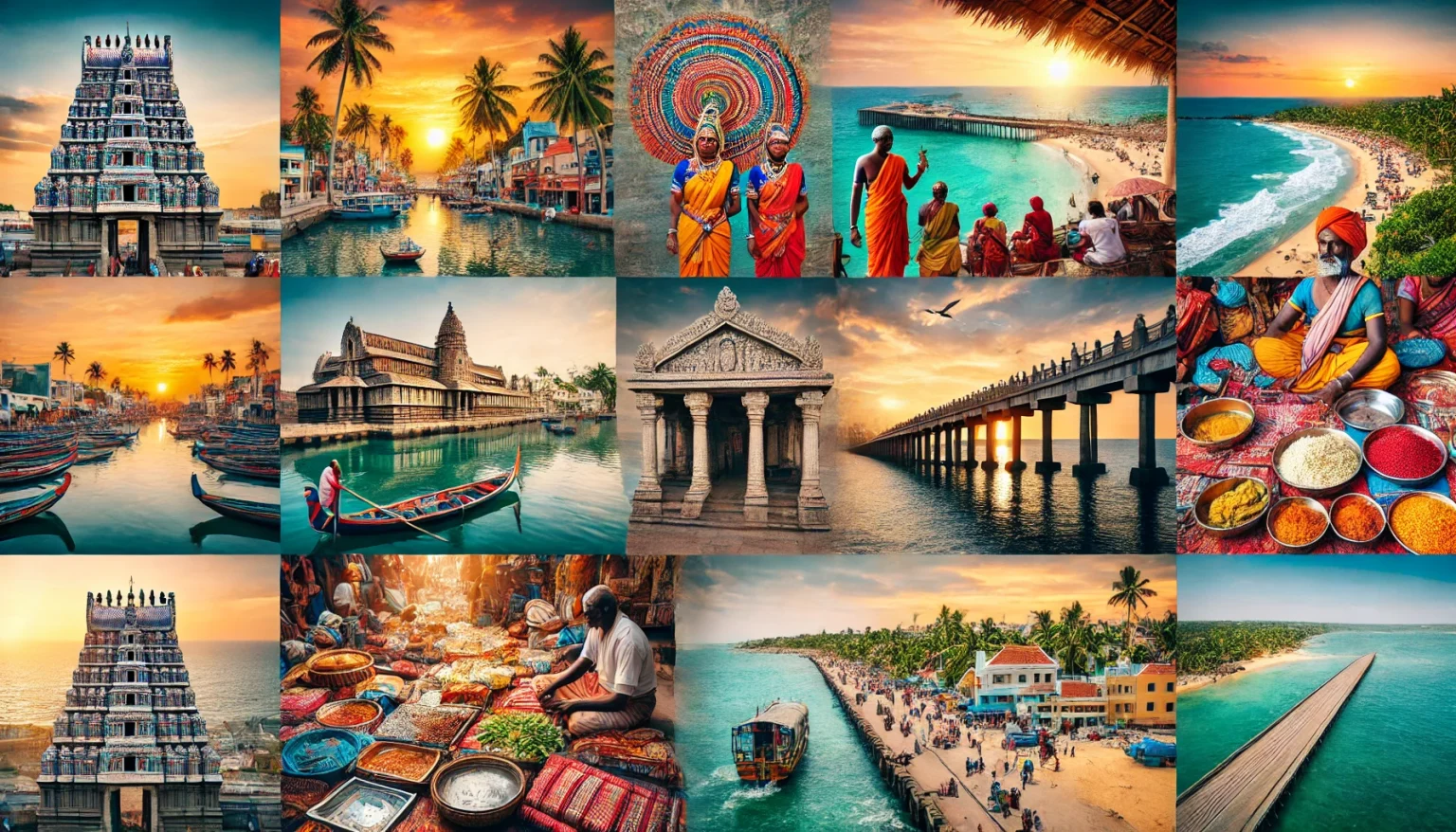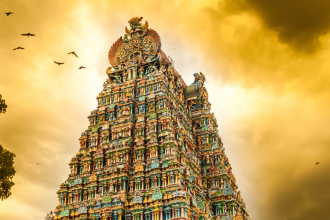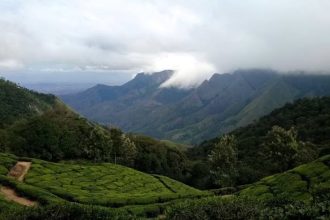Tamil Nadu, a state renowned for its deep-rooted cultural heritage, celebrates excellence in a multitude of traditional art forms, architecture, cuisine, and spirituality. From its vibrant temples and majestic classical dance forms to its age-old festivals and handcrafted artistry, Tamil Nadu is a beacon of the preservation and innovation of its rich traditions. Here’s a glimpse into how Tamil Nadu continues to honor excellence in its timeless traditions:
Classical Dance Forms: Bharatanatyam and Kuchipudi
Highlight: Preserving the ancient dance traditions
Where to Experience: Chennai, Thanjavur, Madurai

Tamil Nadu is the birthplace of Bharatanatyam, one of the oldest classical dance forms in India. This dance form is a harmonious blend of grace, rhythm, and storytelling through intricate footwork, expressive hand gestures, and facial expressions. Renowned dancers continue to perform Bharatanatyam in historic temples and art venues, ensuring the tradition thrives. Similarly, Kuchipudi, another classical dance originating from Andhra Pradesh but performed widely in Tamil Nadu, adds to the state’s diverse dance culture.
2. Architectural Masterpieces: Temples of Tamil Nadu
Highlight: Architectural grandeur and spiritual significance
Where to Visit: Meenakshi Amman Temple (Madurai), Brihadeeswarar Temple (Thanjavur)
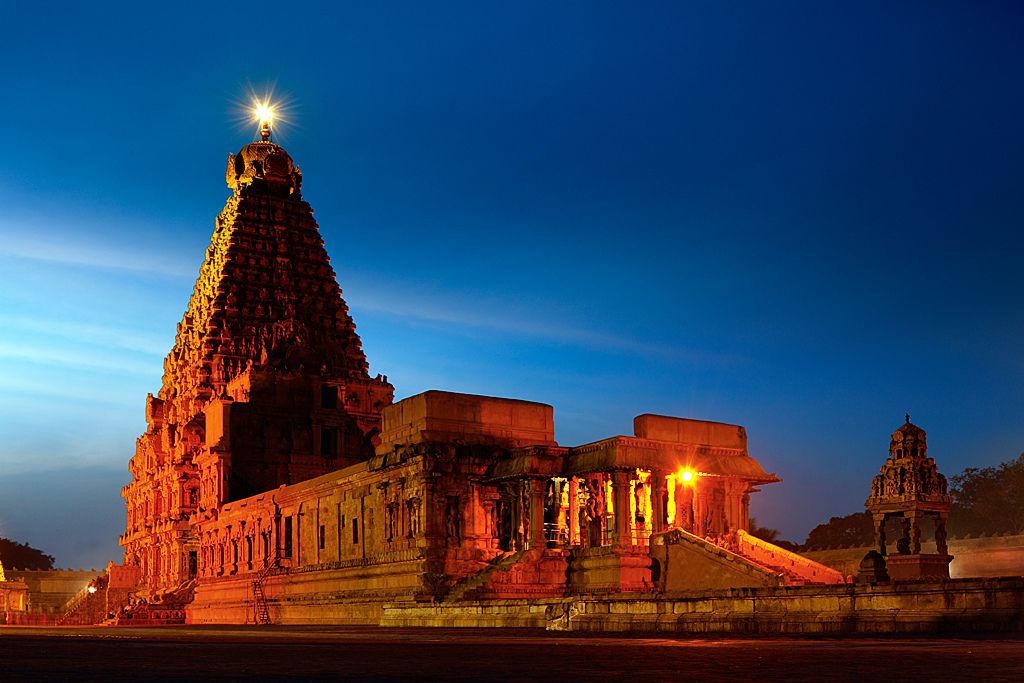
Tamil Nadu is a land of architectural marvels, particularly its grand temples, which reflect the state’s spiritual and artistic heritage. Meenakshi Amman Temple in Madurai and Brihadeeswarar Temple in Thanjavur are prime examples of Dravidian architecture, showcasing intricately carved gopurams (temple towers) and expansive inner sanctums. These temples honor excellence in stone carving, engineering, and religious devotion.
3. Tanjore Paintings: Artistic Heritage
Highlight: Traditional art with a royal legacy
Where to Experience: Thanjavur
Tanjore paintings are an iconic form of traditional South Indian art, renowned for their rich colors, surface richness, compact composition, and compact designs.

This style of painting often features religious themes, using gold foil and glass pieces to create striking textures. The art form flourished during the Chola dynasty and was patronized by the Maratha rulers of Tanjavur. Today, Tanjore paintings continue to honor Tamil Nadu’s artistic excellence and cultural storytelling.
4. Traditional Carnatic Music: A Melodic Legacy
Highlight: A cornerstone of Tamil Nadu’s musical identity
Where to Experience: Chennai, Thanjavur
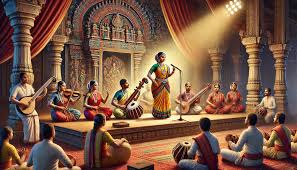
Carnatic music, a classical music system of Southern India, is deeply woven into the fabric of Tamil culture. With its distinct vocal and instrumental forms, Carnatic music honors the legacy of composers like Thyagaraja, Muthuswami Dikshitar, and Shyama Sastri. The annual Madras Music Season in Chennai is a celebration of this classical music tradition, bringing together virtuosos and budding talents alike to perform in various sabhas (cultural associations).
5. Silk Weaving: Kanchipuram and Beyond
Highlight: Traditional weaving techniques passed down through generations
Where to Visit: Kanchipuram, Salem, and Coimbatore

Tamil Nadu is renowned for its Kanchipuram silk sarees, which are woven with exceptional craftsmanship and intricate designs. These silk sarees are known for their richness and durability, often worn during weddings and festivals. The art of silk weaving has been practiced in Tamil Nadu for centuries, and today, artisans continue to uphold this tradition with pride, ensuring the excellence of this ancient craft.
6. Kolam Art: The Beauty of Everyday Life
Highlight: Intricate designs honoring aesthetics and spiritual beliefs
Where to Experience: Homes and temples across Tamil Nadu

Kolam, the art of drawing intricate geometric patterns with rice flour, is a daily ritual in Tamil Nadu. Traditionally drawn in front of homes and temples, Kolams are symbols of welcome and prosperity. The patterns, created with precision and creativity, vary across regions and festivals, reflecting the state’s devotion to beauty and excellence in even the smallest rituals.

